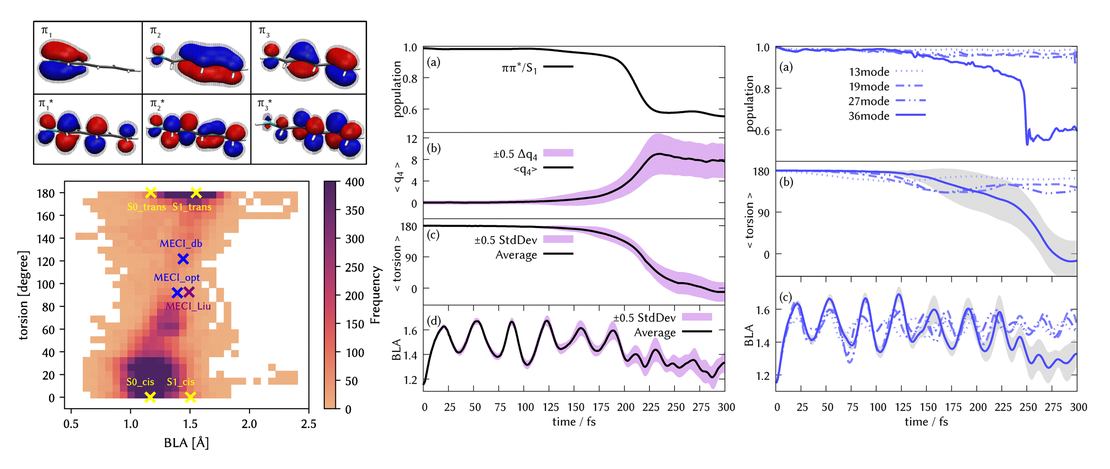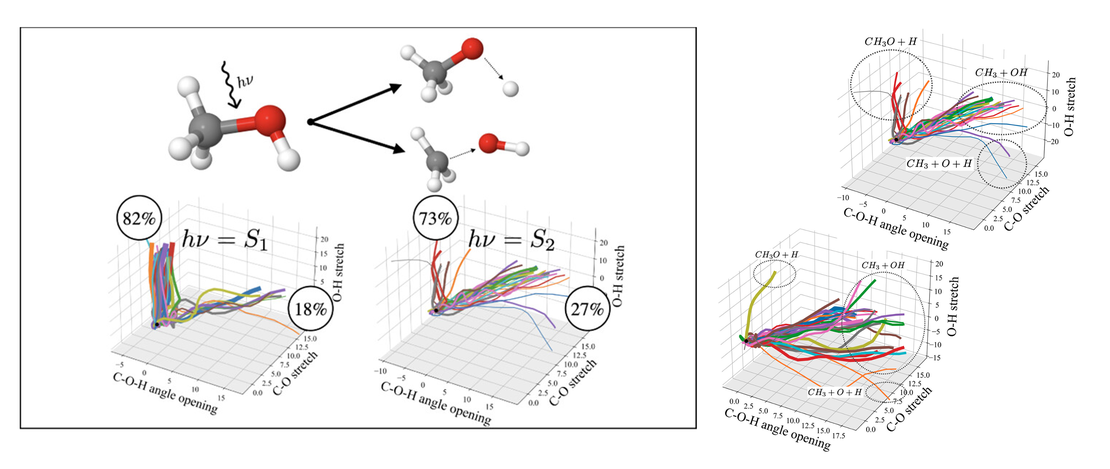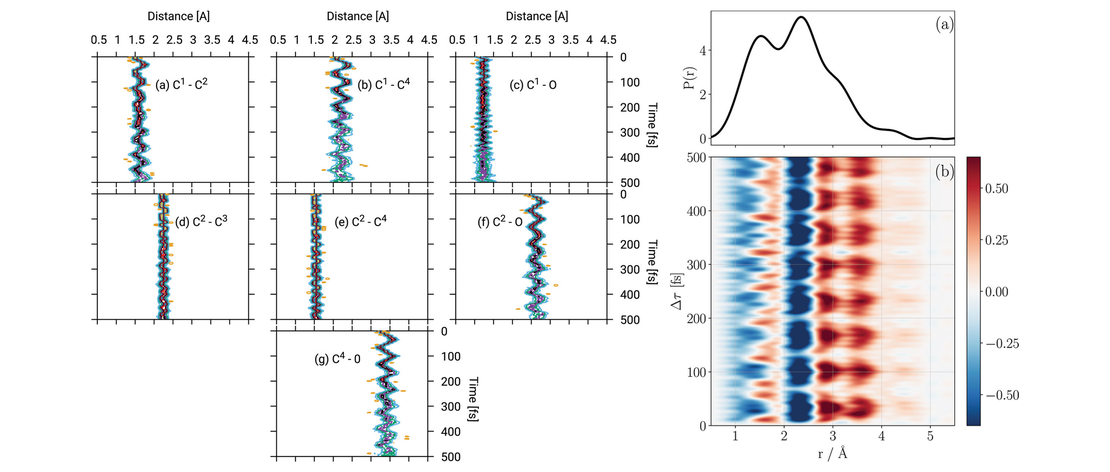
Delayed photoisomerisation of the trans-PSB3 retinal toy model using on-the-fly quantum dynamics
- María Mallo, Susana Gómez-Carrascoa and Sandra Gómez
- Publication , Project partner , Project collaboration
- July 30, 2025
Abstract:
We explore the trans–cis photoisomerisation process in a representative retinal protonated Schiff base known as trans-PSB3, employing the quantum dynamics method direct dynamics variational multiconfigurational Gaussian -DD-vMCG- in full dimensionality, i.e., 36 degrees of freedom on potential energy surfaces computed on-the-fly using the SA(2)-CAS(6,6)SCF electronic structure method with the 6-31G basis set. Although the toy molecule has been extensively studied using trajectory methods such as Tully surface hopping and ab initio multiple spawning, our application of the on-the-fly quantum dynamics method DD-vMCG reveals a previously unreported trans–cis isomerisation pathway through the S1 electronic state minimum that occurs hundreds of femtoseconds more slowly, despite using the same electronic structure method. This slower timescale and alternative deactivation route can be explained in terms of the accesibility to the conical intersections connecting the ground and the excited state.
Additional Resources
DOI:
Quick Ref:
Phys. Chem. Chem. Phys., 2025, 27, 17770–17778

